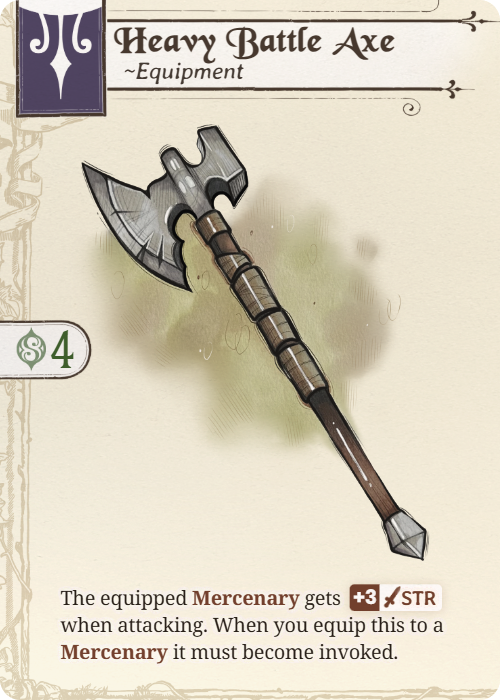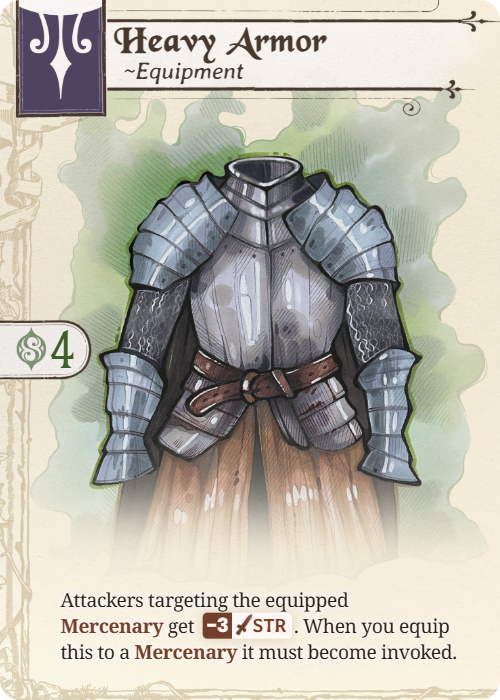Solving “Feels Bad” Moments in Tabletop Game Design
Every tabletop designer eventually runs into the same devious problem. Not an overpowered card. Not a dominant strategy. It is the “feels bad” moment.
A “feels bad” moment is any situation where a player loses agency, gets blindsided, or feels like they had no meaningful way to respond. These moments break immersion, weaken trust in the system, and damage replayability. Even well-balanced games can suffer if individual interactions feel unfair, unavoidable, or too punishing.
During development of Sylvan Tactics we have held a simple design philosophy: powerful plays are allowed, but they must always carry counterplay. Every threat in the game should give the opponent at least one window to respond, reposition, or make an informed trade.
Through hundreds of playtests we have identified several “feels bad” patterns and corrected them. Below are a few case studies that show what we learned and how other designers can apply similar thinking.
What Causes a “Feels Bad” Moment?
Most negative interactions stem from one of three root causes:
1. Lack of Counterplay
A player is placed in danger with no opportunity to respond. Even if the move was clever, the opponent feels powerless, and powerlessness is the enemy of fun.
2. Ambush Lethality
When a high-impact effect appears suddenly with no warning, players feel undermined rather than outplayed.
3. Disproportionate Punishment
Some moves punish an opponent so severely that the cost of stepping into the danger zone feels out of line with the reward.
All three of these can be fixed with careful tuning, clearer telegraphs, or structural rules that protect agency.
Case Study 1: Heavy Battle Axe and Immediate Damage Spikes
In Sylvan Tactics, Mercenaries cannot attack on the same turn they are deployed. This rule creates a natural window for interaction. If an opponent drops a 5 Strength Apex Predator, you always get a turn to react.
Equipment, however, originally did not follow the same logic. The Heavy Battle Axe offered a strong +3 Strength boost that could be used immediately. Equipping it to a 5 Strength Apex Predator created an instant 8 Strength threat against the King. Kings begin with only 10 Health, so a surprise attack created too much pressure too quickly.
Why it felt bad
There was no telegraph. No window to reposition. No moment to breathe. A player could suddenly be staring down a game-ending threat without warning.
The fix
We added a simple rule: equipping the Heavy Battle Axe invokes the Mercenary. Invoked units cannot attack this turn.
The effect is still powerful, but it now carries counterplay. The opponent has a full round to defend themselves, and the user must think ahead rather than execute a surprise knockout.
General lesson
If an effect creates a sudden spike in attack power, cost, or mobility, enforce timing rules that prevent instant impact. Give the opponent a turn. Give the moment space to breathe.
Case Study 2: Heavy Armor and the King’s Strength
Heavy Armor reduces the Strength of any attacker by 3. It is a potent defensive tool. The problem arose when this armor was used adjacent to the opponent’s King. The King originally had a Strength of 3, which meant he literally could not wound the defender. If a King cannot meaningfully interact with a threat that close to his throne, the game becomes frustrating.
Why it felt bad
A rule locked the King out of the board state. Even when standing face-to-face with danger, the King had no options. That breaks the implicit promise of agency that tactical games rely on.
The fix
Instead of nerfing the armor, we buffed the King. His base Strength is now 4. This made him more threatening in general and restored his ability to push back against armored foes.
General lesson
When a defensive ability shuts down too many of a player’s options, the issue may not be with the defensive tool itself. Sometimes the underlying unit needs to be brought up to the power level of the interaction.
Case Study 3: Camouflaged Cloak and Surprise King Attacks
The Camouflaged Cloak granted the Infiltrator keyword, letting a Mercenary move through other units. Its original cost was 1 Sigil. In one game, a player equipped a 5 Strength Apex Predator that also had a 2 Strength Partner attached. They paid 1 Sigil, slipped the unit through enemy lines, and hit the King for 7 damage in a single shock attack.
Why it felt bad
The effect enabled a full bypass of defensive structure at almost no cost. The stronger the attacker, the cheaper the ambush felt.
The fix
The cost of Camouflaged Cloak now scales with the Strength of the Mercenary it is attached to. Equipping a massive threat now requires massive investment. Because players usually max at 6 Sigils per turn, it becomes effectively impossible to cloak a 7 Strength unit and attack in the same round.
General lesson
When an effect bypasses core gameplay structure, especially movement or defensive positioning, its cost should scale with the power it multiplies. Cheap effects that multiply expensive units create the worst ambush moments.
Broader Principles for Avoiding “Feels Bad” Gameplay
1. Telegraph Big Plays
Players do not mind losing if they saw the threat coming. The mind frames it as “I should have responded” instead of “I had no chance.” Telegraphs can be:
Turn-based timing rules
Cost increases
Temporary restrictions
Limitations on same-turn impact
2. Maintain Counterplay Windows
Every action that can threaten victory should have at least one method of response. This does not mean every threat must be removable. It means every threat must be interactable.
Questions to ask during design:
Does the opponent get at least one turn to reposition?
Can defenders respond with meaningful actions?
Are there soft answers like blocking or stalling?
Are the answers evenly distributed across playstyles?
3. Look for Combos That Multiply Rather Than Add
Most problematic interactions happen when two moderate effects multiply into an extreme one. If adding a keyword to a unit creates explosive synergy, consider scaling the cost of the keyword with the unit’s stats.
4. Keep Punishment Proportional
Players accept punishment that matches the risk they knowingly took. They resent punishment that exceeds it. If a player is punished severely for an action that seemed reasonable, it is often the rule that needs attention, not the player’s decision making.
5. Protect Player Agency Above All
Agency is not the freedom to win. It is the freedom to make meaningful choices that influence the outcome. Whenever a rule removes options, ensure that it does so sparingly and intentionally.
How Sylvan Tactics Has Improved Through This Philosophy
As we refine Sylvan Tactics, our goal is to encourage bold plays, clever positioning, and high-impact combos. But we also want those moments to feel fair. Each of the changes above maintains the excitement of powerful cards while reinforcing our commitment to clear telegraphs and meaningful response windows.
Every adjustment has made the game tighter, more strategic, and more respectful of player agency.
If you are a designer struggling with your own edge cases, remember the core principle:
Power is fun. Surprise can be fun. But helplessness never is.
Want to learn more about Sylvan Tactics? Follow along for updates, previews, and development news on Instagram, Bluesky, or join our Discord:





